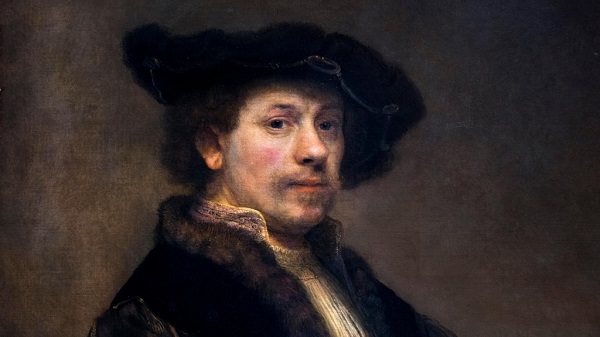He was disliked for painting the poor: Who is Rembrandt?
In his paintings, there were old people, poor people, comedy artists, and black people who were not approved for that day. However, the groups who considered themselves as the elite wanted to see the great figures of the period in the paintings.

Dutch painter. He was born on 15 July 1606 in Leiden, Netherlands, and died on 4 October 1669 in Amsterdam. He is the child of a family in the middle class. Brush works in his paintings have a high expressive quality. Rembrandt expressed with his brush the subjects that many writers have to explain in pages.
Rembrandt Harmenszoon van Rijn (15 July 1606 – 4 October 1669), usually simply known as Rembrandt, was a Dutch Golden Age painter, printmaker and draughtsman. An innovative and prolific master in three media, he is generally considered one of the greatest visual artists in the history of art and the most important in Dutch art history. It is estimated Rembrandt produced a total of about three hundred paintings, three hundred etchings and two thousand drawings.
After finishing Rembrandt Latin School, he enrolled at Leiden University. He had an extreme desire and talent for painting. Because his father was poor, he sent Rembrandt to Amsterdam to live with wealthy families. He stayed there for six months with Pieter Lastman, who grew up under the influence of Italian painting. He returned to Leiden in 1625 and began working alone. He settled in Amsterdam after his father's death.
Rembrandt was under the patronage of a wealthy merchant in Amsterdam. Here he made his first famous painting, "Doctor Tulp's Anatomy Lesson". He married Saskia, the niece of the merchant he was staying with. Meanwhile, he had become very wealthy under the patronage of the governor. When his three children, mother, and wife died, he was left alone with his only son, Titus. He got into stock market games and gambling. The painting "Night Watch", which he finished at the time of his wife Saskia's death, was not liked. Everyone was stunned by the fact that the portraits in the painting included scenes that revealed lived and moving realities instead of still and serious compositions. When Rembrandt was unemployed and broke, he could not improve his situation, although he resorted to various means to earn money. However, he produced his most striking paintings while living a poor life. In his paintings, there were old people, poor people, comedy artists, and black people who were not approved for that day. However, the groups who considered themselves as the elite wanted to see the great figures of the period in the paintings. Rembrandt's paintings gained value later. The "Bust of Homer" in the New York Museum of Art, USA, was valued at $2,300,000 in 1961, 300 years after Rembrandt's death. This value has not yet been given to any table in the world.
Since Rembrandt was kneaded with a strict Protestant education at an early age, he chose the events described in the Bible and turned them into paintings. There are more than one hundred and fifty paintings on this subject. "Abraham's Sacrifice", and "The Descent of the Cross" are among these paintings.
